While Red Branch Media works with organizations of all types, we’re definitely the most practiced at B2B marketing – specifically within the HR and recruiting industry. We get seriously excited about industry trends or our clients’ new product/service offerings. Just last weekend, I talked about the employment law case featured in #6Things until I saw my boyfriend’s ear fall off. The point is, we already understand why what we’re marketing is important to the world. That’s easy.
It isn’t so simple to show others why they should join in our enthusiasm. This isn’t a new problem to marketers. In fact, it is our career’s purpose. Some companies have fun, easy to Instagram brands, but that’s not generally who RBM works with. We like a challenge. We have lots of tactics, but creating great content for company blogs is my favorite. Read on to learn some of the blogging best practices we use within our own content development process.
Does your #ContentMarketing need a new direction? Follow these best practices: Click To TweetNot sure you need to read about how to blog better? Well, one company reported their content marketing receiving 4x the return of their traditional marketing spend. So…
In order to create a post that captures and captivates your audience, your blog must:
Make It Intriguing
Why will someone want to read this? Are you providing a new way of thinking, do you have an exciting take on current trends? What will interest your buyer (who you hope is reading your piece)? Do you have a story that connects you to the copy? Get creative, but be relatable. Even your approach to language can play a part in selling. For instance, this copywriting website sample makes writing into writing that intrigues:
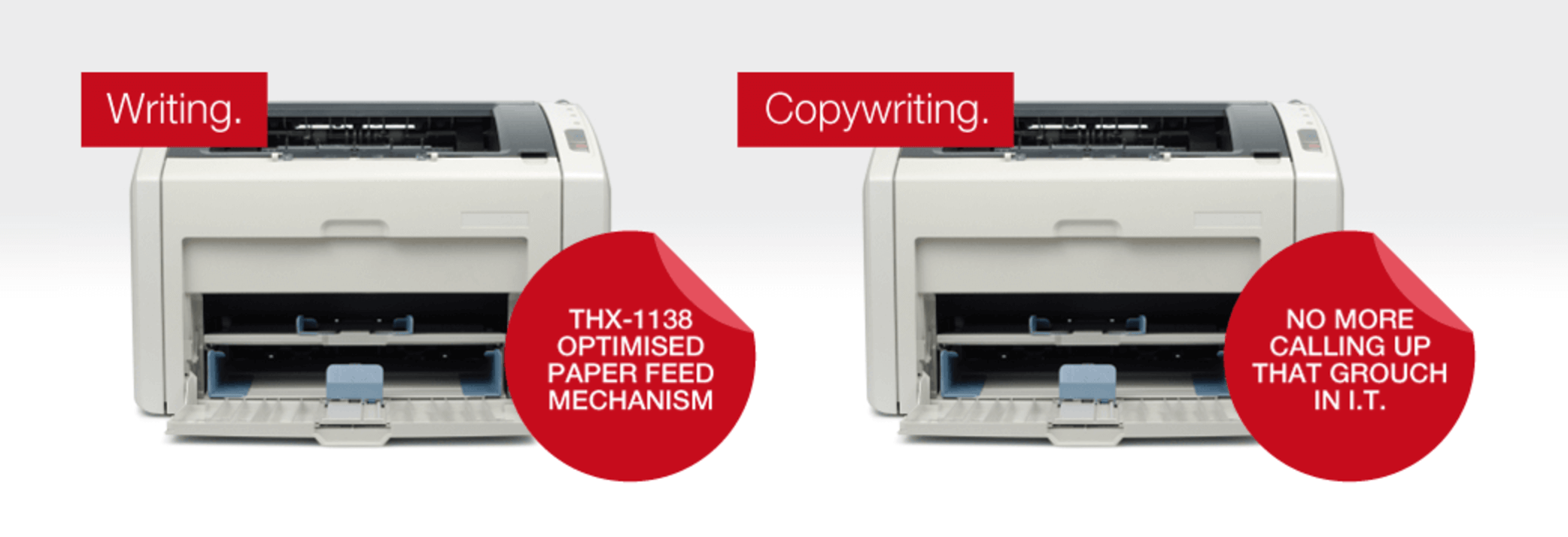
A top blogging best practice is to never allow a blog post to simply be another blog post. You want your reader to be engaged and compelled to make a move, whether that’s to work with you or purchase your product. Finding that exciting angle is harder for many of the brands we work with so we like to think in terms of the audience’s pain points. We build our content’s focus around how we can address or ease concerns. While maybe not as flashy as consumer branding, the content we produce still plays a pivotal role in the reader’s needs and goals. Covering timely topics or trends is a great way to get the ball rolling.
(If you work in HR or recruiting, I highly suggesting following Maren’s #6Things column. She’s always covering the latest in the industry.)
Let’s Get Visual, Visual
Literally, place images in your post. Over 90% of marketers claim to use visual content in more than 50% of the articles they published. We love using gifs when emailing each other, so they typically spill into our content, but we also love photos and screenshots. Boutiques and fashion lines show images of people wearing their clothes. Non-profits show the people who they help and in some cases, how they are helped. In B2B, this is done through images of customer interactions, your product suite and even your office or employees. For example, check out our designer taking pictures for a website we developed. It’s a quick Instagram photo we shared that tells a story on how we work.
Overall, images are great but infographics are really where it’s at. A Venngage infographic reports that 41.5% of marketers said original graphics (infographics and illustrations) performed best, and over 60% believe visual content is absolutely necessary. Unfortunately, not all marketers have the skills or time necessary to design original pieces. Thankfully, products like Venngage exist for marketers who don’t have a team of graphic designers at their disposal. Heck, Red Branch does and we still use Venngage for some of the work we can’t devote hours of time to. That’s right, Venngage is RBM tested and approved.
We're sharing our blogging secrets. See how @Venngage & others help us create content: Click To TweetFind Your Voice
Use and never lose it. Grammar is important, but if you can adapt your words to suit the way you would speak with a buyer/client, do so. In other words, it’s all right to structure sentences in your blog content to match how you speak in real life. The whole “show, don’t tell” rule applies. While images will draw people in, your words need to be just as captivating and hold value. Be descriptive. Use words that suit the tone. This list can help you spice up overused words.
Give ‘Em An Offer They Can’t Refuse
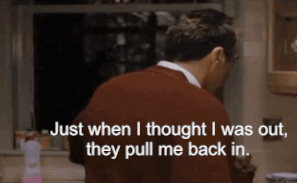
This isn’t always a coupon or sale (but it can be). Instead, the offer can be your expertise or other useful information. Is there a new development in your industry? An update to machinery or technology? A recall in the market or a little-known hack? Can you feature a new client or user? Anything that paints color around your organization and the work you do can tip the purchasing scale in your favor. Typically, we like to create guides or downloadable resources that actually provide advice to our audience.
Hint: If something has happened in your business that excites you, share it with your readers. Chances are they will share the excitement.
End With A Direct Call to Action
A CTA should be featured in every piece of content you produce. They take different shapes, but they are always the same: give the reader an extremely clear next step. Don’t be cryptic. The action you want them to take will either go unnoticed or seem insincere – meaning no new lead.

In general, blogs are top of the funnel marketing tactics. In order to steer your reader into a lead, you have to provide value. Your CTA is that attempt at showing value. In some cases, we direct our reader to a downloadable guide or printable. And we always feature related content at the end of our posts so our reader can find additional information on the subject. That way, if the initial CTA wasn’t of interest, the next one might be.
Don’t Forget The Unforgettable Title
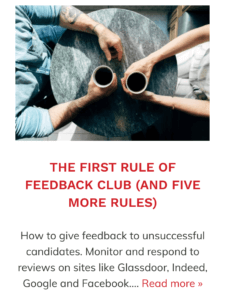
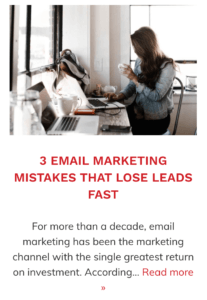
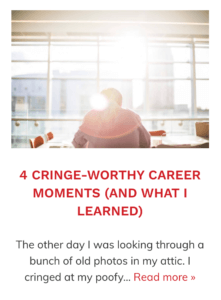
You might have created the next best novel, but without a great title (or really good PR), you just won’t grab the readership. Titles should be between 5 – 7 words or less and present your topic in an unexpected way. Here’s some of the titles Red Branch Media writers used:
See how they get the point of the article across but in a way that grabs your attention? The first one uses a reference to a movie title that many people know. The second uses fear. No one wants to lose leads, so we instinctively click in hopes we aren’t committing those 3 mistakes. The last uses “cringe-worthy,” an interesting word that means you will probably get a good, potentially humorous story if you followed by sound advice. If you aren’t sure what to call your post, check out this cool headline generator. And if you think you have an amazing headline, double check with this headline analyzer.
90% of marketers use visual content in more than 50% of the articles they publish. #GraphicDesign Click To TweetYou spend a ton of time writing, researching and organizing your blog articles, so it can be disheartening when a piece you post doesn’t get the attention it deserves. If you’ve been riding on the fact that you’re working in a niche market, let it go. Find your angle, sell your piece and you might just start landing top-notch sales leads.


